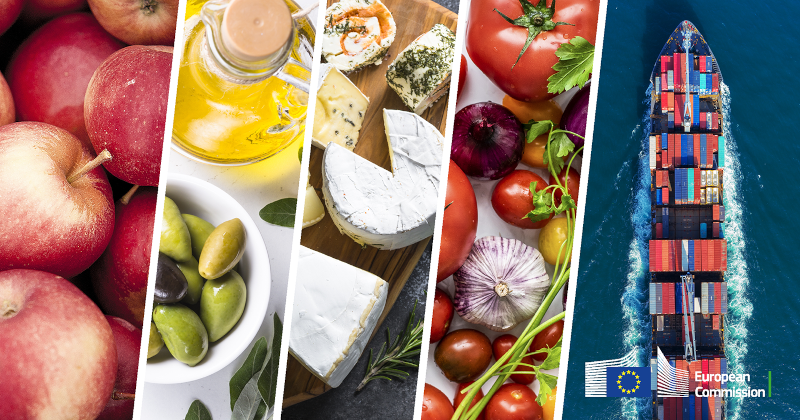
Looking back at the year 2022, the latest monitoring report published by the European Commission shows that EU agri-food trade totaled €401.5 billion during the year, with a positive trade balance of €58 billion. Despite global price increases, volumes of agri-food products traded have not decreased, and occasionally have even increased. The European Union remains the top global trader of agri-food products, renowned for their quality and competitiveness. The EU’s broad network of trade relations and agreements allowed the diversification of trade partners to overcome challenges throughout the year incurred by Russia’s invasion of Ukraine.
Exports
In 2022, EU agri-food exports reached €229.8 billion, a 31% increase compared with 2021. Cereals and cereal preparations & milling products have been increasing the most in EU total exports. These products represented 7% and 10% of EU exports, respectively. In line with its commitment to global food security, the EU has been increasing wheat exports to developing economies. The most important destinations were Algeria (4.9 million tonnes), Morocco (4.1 million tonnes), Egypt (2.9 million tonnes) and Nigeria (2.5 million tonnes).
One of EU’s primary exports remains dairy products with €20.4 billion’s worth of export in 2022. Pigmeat also remained the largest exporting meat product that past year with €13.8 billion, despite a drop in Chinese demand.
In terms of trade partners, the UK still is by far the first destination for EU exports, representing one fifth of total EU exports. The United States ranks second, with 13% of EU exports in 2022 followed by China with 7% of total EU exports.
Imports
In 2022, EU imports increased by 32% compared to 2021 in value terms. This represents €172 billion of imports. This is largely due to an increase in global prices, especially for oilseed products and coffee. The first category of imported products are oilseeds and protein crops of which the EU imported €25.8 billion worth in 2022. The rise in global prices has been combined with an increasing need for imports of sunflower and soya beans due to the summer drought of 2022. This has also been the case for maize imports to compensate the EU domestic drop in production.
Otherwise, fruit & nuts as well as coffee, tea, cocoa, and spices remain the 2nd and 3rd top agri-food categories imported into the EU in value terms, which increased significantly vis-à-vis 2021 while volumes remained relatively stable.
Brazil remains the first import source for the EU, representing 12% of total EU imports. The United Kingdom ranks second, with 9% of EU imports in 2022. Ukraine has overtaken the US in 2022 as the third import source of EU agri-food imports.
More insights as well as detailed tables are available below in the latest edition of the monthly EU agri-food trade report.
Details
- Publication date
- 13 April 2023
- Author
- Directorate-General for Agriculture and Rural Development
- Location
- Brussels

